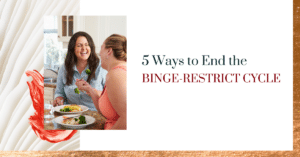Joyful Movement: How to Find Exercise You Like
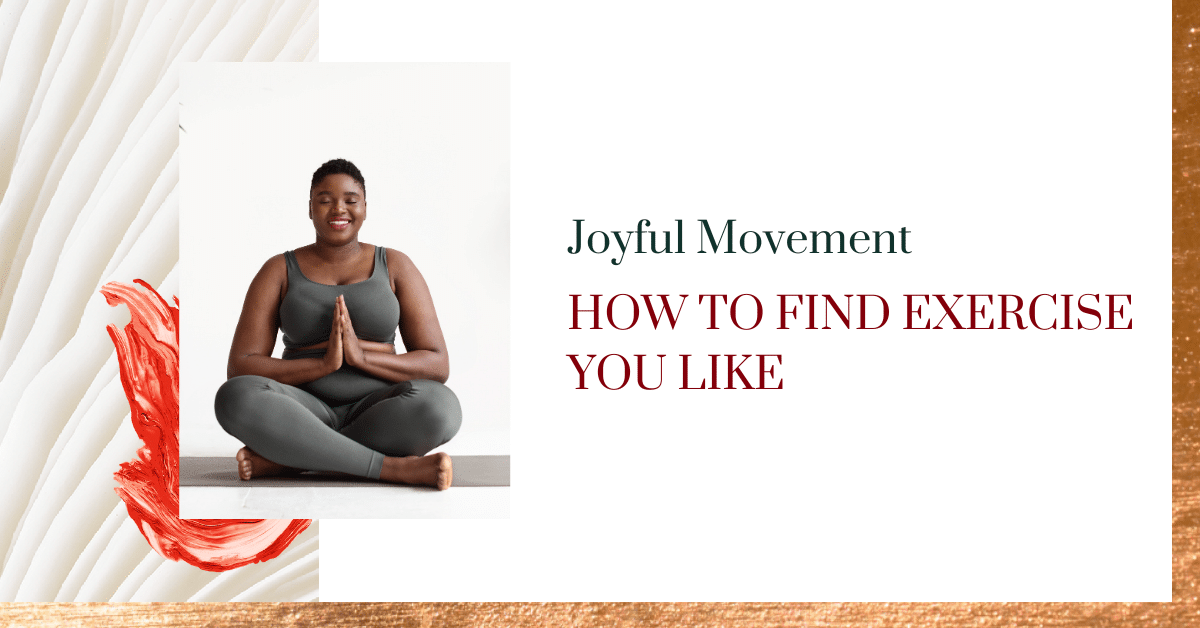
If you’re like many people, you may have a love-hate (or a hate-hate?) relationship with exercise. Joyful movement is a way to shift your perspective on exercise so that you can go from feeling like exercise is a chore or something you “should” do, to something you look forward to and perhaps even enjoy doing. Continue reading to learn more including health benefits and 50+ joyful movement ideas
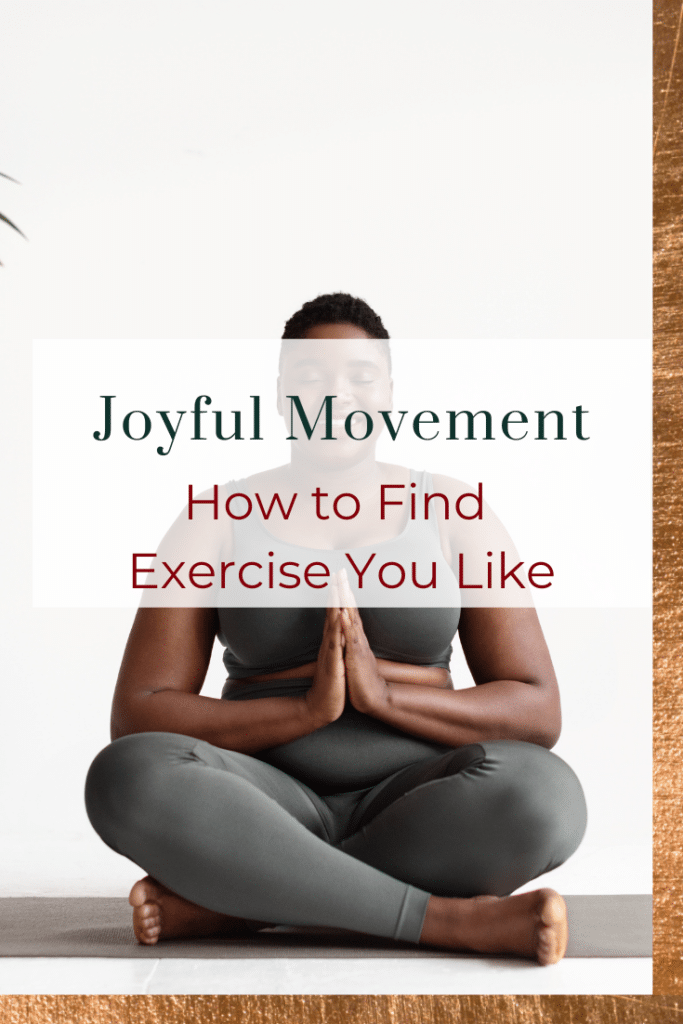
Last summer I bought a basketball. It had been well over 20 years since I had last stepped on a court, yet I was feeling the pull to shoot some hoops. I had no desire to join a team or play competitively, but I couldn’t get the idea of shooting a basketball out of my head.
The next morning, my partner and I drove 5 minutes down the road to a nearby elementary school, empty for the summer and in possession of an old, cracked blacktop with a few basketball hoops. Dribbling a few times, I took my first shot. A smile broke out on my face. I felt joy.
From Guilt to Joyful Movement
I have a tenuous history with exercise, in large part because my first foray into a gym at the age of 17 stemmed from a desire to lose weight and change my body. For the next 10+ years, my motivation for exercise remained closely tied to body size and appearance.
While I enjoyed lifting weights and was able to move away from my very rigid college workout schedule and become more flexible with movement in my 20s, I still would feel guilty when I didn’t make it to the gym as often as I wanted. That feeling of guilt and pushing myself to work out X times per week was something that was so often present, that I didn’t realize how much brain space it was taking up.
Then I injured my hip and had to stop all exercise outside of physical therapy. At this point, I was about a year or two into my training in intuitive eating, and this forced exercise hiatus made me more aware of how unhealthy my relationship to movement still was.
I worked through the guilt I felt at not working out, unpacked how much of my identity was tied to being a “gym rat”, and came back to find joyful movement at my own pace. I learned how to tune into my body and, through a lot of trial and error, was able to figure out how to know if my body wanted movement and when to know it wanted to rest. My motivation for exercise shifted from being guilt-motivated to being driven by my knowledge that if I didn’t move on a regular basis, I’d be in a lot more pain.
What is Joyful Movement?
Joyful movement is about tuning into our body and finding ways of movement that feel pleasurable. It’s about checking in with your body and using what cues you notice to help you decide what type of exercise, and for how long, feels best for you.
Instead of choosing a certain exercise because that’s what you think you “should do”, or exercising out of a sense of guilt or shame, joyful movement is thinking about what you want to do, or what would feel best for you to do. Some days this might mean you do a higher-intensity workout, while other days may call for a gentle yoga class or a walk.
Joyful movement involves shifting your perspective and motivation from extrinsic to intrinsic. Instead of a primary goal of exercising to lose weight or burn calories, the goal(s) could be to have more energy, less pain, sleep better, or run faster. The focus is on how it feels to move your body, rather than how many calories you’re burning.
As I worked with my physical therapist to rehab my hip, I began to explore what forms of movement felt best in my body. Sometimes that meant joyful movement that I really loved doing (e.g. shooting a basketball, going on a walk through Brooklyn during golden hour, or taking a restorative yoga class)
And sometimes that meant doing forms of movement that I felt “eh” about (like my physical therapy exercises…does anyone enjoy their physical therapy exercises??) but knew would make me feel better. And sometimes – way more often than I ever used to – that meant resting.
The shift in mindset from calorie burn/guilt-driven movement to how it feels before, during, and after movement can allow exercise to become more enjoyable, less stressful, and can even end up being something to look forward to, rather than dread.
The Difference Between Traditional Exercise and Joyful Movement
As I explored what movement felt good to me, I also learned what wasn’t joyful movement to me. For example, running was no longer joyful – the thought of going on a run brought up a feeling of contraction in my body: no thanks. Same with going to the gym: while I sometimes miss lifting weights in a weight room, the vast majority of the time that type of exercise no longer appeals to me. And that’s okay.
Many of us – myself included, for a very long time – have a pretty rigid idea of what “counts” as exercise, related to the amount of time, days per week, and type of movement.
- XX minute workout at the gym: check.
- XX minute run: check
- X days/week of an online training program: check
- XX minute walk: nope
- XX minutes playing with your kid: nope
- XX minutes cleaning the house: nope
This can lead to a type of all-or-nothing thinking that I see regularly in my clients. Here is an example of how this conversation often goes:
Client: “I don’t feel like working out. I’m really tired at the end of my workday, and the thought of doing the 45-minute HIIT training program feels like a chore.”
Me: “Have you tried any other types of workouts instead?”
Client: “The other day I pulled up a different workout video, but it was only 20 minutes long and it felt too easy like it wouldn’t actually have any benefits.”
All-or-nothing: the 45-minute video was what would have “counted” as exercise, a shorter or different workout didn’t “count” so there was no point – instead they just didn’t do anything. (And, as I often see, the guilt over not exercising led to emotional eating because “screw it, I already messed up by not working out).
Joyful movement, on the other hand, is flexible and involves finding the nuance. It doesn’t necessarily look the same from day to day or week to week, and this is not just okay but actually beneficial! When you allow yourself the flexible to find the middle ground, to find what works best for you, chances are this will be a habit that you’ll be able to sustain long term.
Movement May Not Always Feel “Joyful”
Now the name “joyful movement” is a bit of a misnomer, because it does not mean that every form of movement you do will feel (or needs to feel) fun or joyful. Sometimes, like with my physical therapy exercises, I’m doing them not because they’re fun, but because I know my hip will be in less pain if I perform them regularly.
The difference between this and traditional exercise is, while these exercises are not necessarily joyful for me (at least not in the way shooting a basketball is), I also don’t have a sense of dread or feel like it’s a chore.
What are the Benefits?
Practicing joyful movement can also help you nurture a healthier, more balanced relationship with exercise and your body. Joyful movement involves body movement as a form of self-care, as an act of body respect and kindness towards your body (instead of punishment). Instead of all-or-nothing, movement – or your definition of it – becomes more flexible.
While part of you may be worried that if you don’t “force” yourself to do a certain amount of exercise, you’ll never do it (this is a common fear!) – the reality is actually the opposite: when people become more flexible with what constitutes movement, and shift their motivations for working out, they find that over time they actually develop more of a consistent exercise routine.
Extrinsic motivation for exercise such as burning calories, compensating for what you eat, or trying to lose weight, doesn’t tend to be motivational long-term. It again goes back to the all-or-nothing: when the results of exercise aren’t what you expect (i.e. weight loss or body changes), or it’s taking too long to get those results, many people give up and stop exercising because “what’s the point?”.
There are many well-documented benefits of exercise, including:
- Improved sleep
- Lower levels of stress and anxiety
- Increased energy
- Improved mood
- Increased muscle mass
- Better balance and flexibility
- Increased cardiorespiratory fitness (i.e. being able to go up stairs without getting as out of breath, or running for a longer period of time)
- Reduced risk of heart disease, type 2 diabetes, high blood pressure and high cholesterol
- Increased memory and mental clarity
- Better bone density
- Reduction in chronic pain (for some people)
Looking at the list above: what are some of the benefits that you get from exercise? What would you add to the list?
How to Practice Joyful Movement
To get started with joyful movement, consider the following questions:
- What types of movement do you enjoy doing?
- What types do you not enjoy or dread?
- What types of movement feel best in your body?
- What types of movement do you often feel like doing?
- What types of movement did you do as a child?
Check-in with yourself and see what you notice: what type and amount of movement would feel good to your body today? If you’re not sure, that’s okay: pick something (see the list below for some ideas), try it out, and then see what you notice.
This takes experimentation and a curious, open mind. The more you can check in with your body before, during, and after exercise, the more your intuition around movement will become clear (very similar to intuitive eating).
Here are some more tips to practice intuitive and joyful movement.
55 Joyful Movement Ideas
Stumped on what type of movement to try? Here are a variety of joyful movement ideas. Comment below and let me know what you’d add to the list!
- Shoot a basketball.
- Go swimming.
- Run or walk up a hill.
- Go for a hike.
- Play wiffleball.
- Wash your car.
- Mow the yard.
- Pick up a racquet – pickleball, tennis, racquetball, etc.
- Try snowshoeing.
- Go cross-country skiing.
- Kickboxing
- Jump rope.
- Learn how to surf.
- Try pilates.
- Play tag.
- Chase a child (or dog) around.
- Throw a frisbee.
- Play catch.
- Go paintballing with friends.
- Take a belly dancing class.
- Challenge someone to a game of ping pong.
- Try water aerobics
- Take a yoga class (or do it on your own)
- Ballroom dancing.
- Go for a bike ride.
- Join a baseball or softball league.
- Rent a stand-up paddleboard.
- Run barefoot through the grass.
- Take a spin class.
- Register for a mud run.
- Work with a body-positive trainer.
- Try a kettlebell class (this is on my list!)
- Play fetch with a dog.
- Go rollarskating or rollarblading.
- Garden.
- Join a kickball team.
- Take the stairs more regularly.
- Clean the house.
- Set up an obstacle course in your house or front yard.
- Turn on your favorite music and dance.
- Try acro yoga.
- Jump on a trampoline (I did this recently and forgot how much fun it is! Ha and how tiring).
- Find a walking or running buddy.
- Go ice skating.
- Grab a hula-hoop.
- Pick up some weights and strength train.
- Rock climb (or try an indoor climbing gym).
- Hop in a kayak or canoe.
- Sign up for a boxing class.
- Do some stretching.
- Take your dog (or volunteer to take a friend’s dog) for a walk.
- Find a free fitness class on YouTube: think yoga, Zumba, hip hop, barre, etc.
- Take an aerial silks class.
- Play volleyball.
- Do a bodyweight circuit: pushups, crunches, lunges, etc.
Joyful movement is about what feels best to you at the moment. This can look different day to day, week to week, year to year. It also is going to look different from person to person, so try not to compare yourself to others (or to a past version of you), and just do what makes you feel good.
Looking for more support?
My team and I offer virtual one-on-one coaching, supporting people with intuitive eating and movement, disordered eating and eating disorders, and more.
I also recommend my Unapologetic Eating 101 Course, an online, self-paced intuitive eating and body image program to help you liberate yourself from dieting and make peace with food and your body.
Author Bio
The post was written by Alissa Rumsey, MS, RD, CSCS, a registered dietitian, Certified Intuitive Eating Counselor, and Certified Strength and Conditioning Specialist through the NSCA. She specializes in weight-inclusive care, intuitive eating, body image healing, mindfulness, self-compassion, and healing from chronic dieting, disordered eating, and eating disorders. Alissa holds a Bachelor’s Degree in Nutrition and Exercise Science, and a Master’s Degree in Health Communications.
share the love
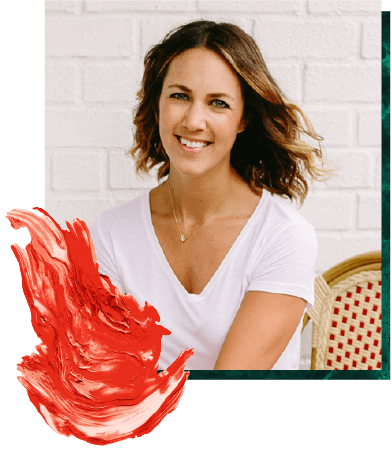
about
Alissa Rumsey, RD.
Alissa Rumsey, MS, RD, CDN, CSCS (pronouns she/her/hers) is a registered
dietitian, nutrition therapist, certified intuitive eating counselor, and the author of
Unapologetic Eating: Make Peace With Food and Transform Your Life. Alissa is
passionate about helping people reclaim the space to eat and live,
unapologetically.
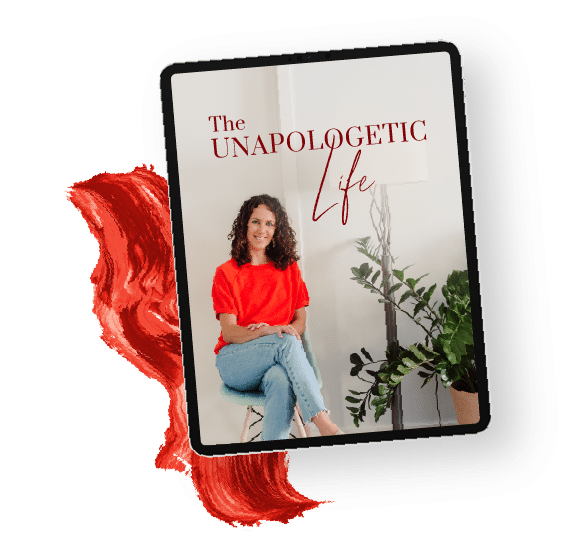
A twice-a-month round-up of inspirational stories, lessons, practical tips and encouragement for living your most authentic, unapologetic life.
The Unapologetic Life
RECENT POSTS
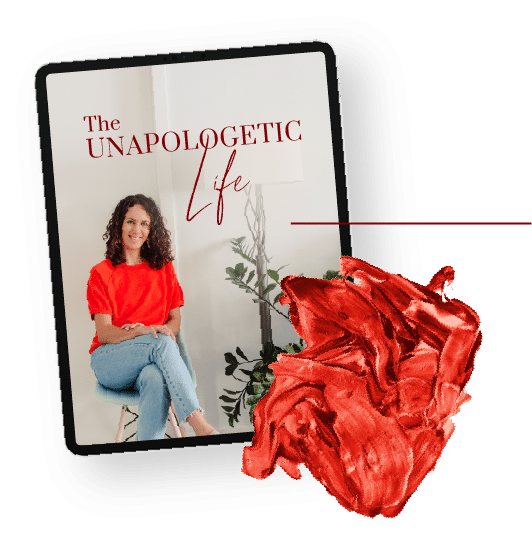
The Unapologetic Life
A twice-a-month round-up of inspirational stories, lessons, practical tips and encouragement for living your most authentic, unapologetic life.






